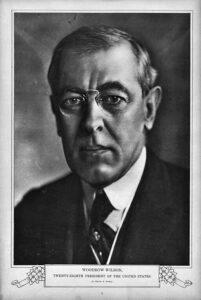Did you know?

The genesis of contemporary government propaganda is believed to stem from the First World War, where President Woodrow Wilson led the US government in forming the Committee on Public Information (CPI). Its primary objective was to rally public support for the war and foster a positive outlook towards the war effort.
The CPI functioned as a colossal propaganda tool, designed to steer the narrative surrounding the war and sway public perception. It employed an array of media outlets, such as magazines, newspapers, posters, and films, to disseminate its messaging.
Censorship was a potent weapon in the CPI’s arsenal. Through dissemination of information regulations, the government ensured that only pro-war news was released, controlling the narrative and curbing anti-war sentiment.
Through its propaganda efforts, the government was able to create a sense of nationalism and patriotism among the American people, and convince them that their participation in the war was necessary to defend their country’s values and way of life. The media played a crucial role in this process, as it was the main source of information for most people.
Noam Chomsky, in his book “Media Control,” demonstrates how the control of the media can lead a country to desire war.
